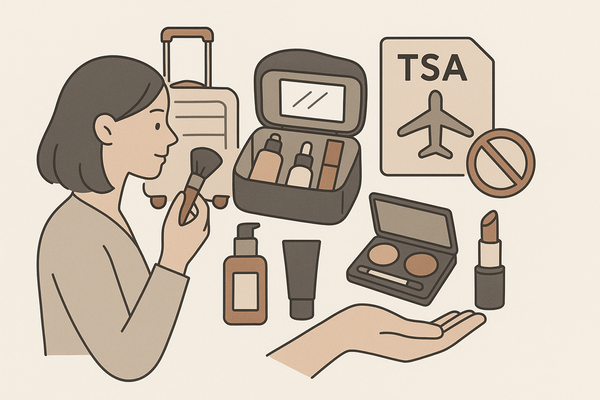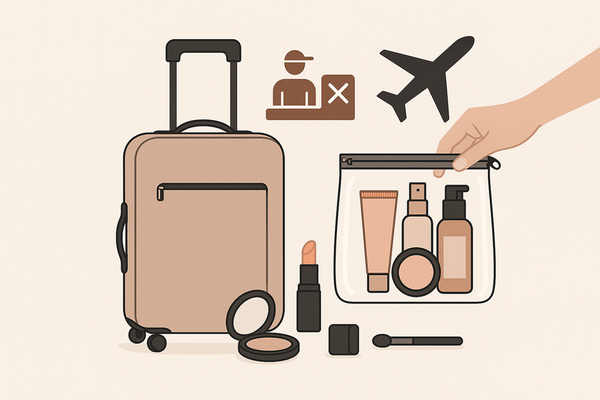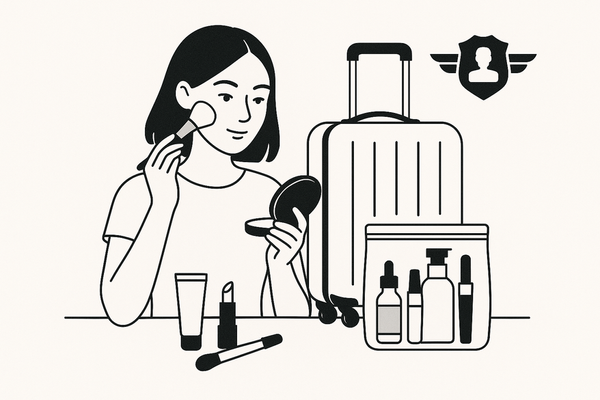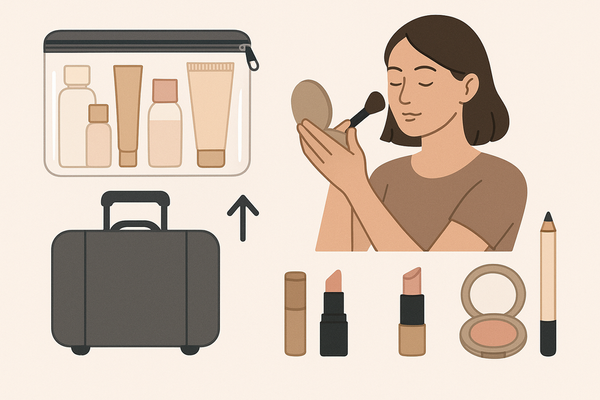Sustainable Makeup Packaging Disposal: A Comprehensive Guide
Discover how sustainable makeup packaging disposal can reduce waste and environmental impact. Learn best practices and industry innovations in this guide.
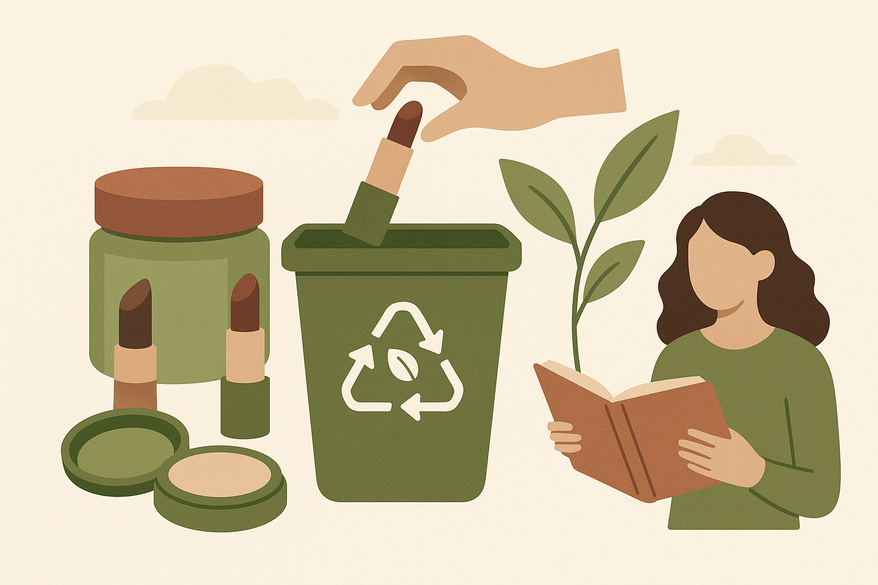
8 min read
Key Takeaways
- Understand the impact: Makeup packaging contributes over 120 billion units of waste annually, driving pollution and resource depletion.
- Know your options: Recycling, reusing, upcycling, mechanical/molecular recycling, and waste-to-energy can all play a part.
- Follow best practices: Clean, sort, and separate components; participate in curbside programs and brand take-back initiatives.
- Explore innovations: TerraCycle, Pact Collective, refillable designs, and biodegradable materials are reshaping the industry.
- Take action at home: Empty remnants, rinse containers, consult local guidelines, repurpose jars, and support eco-friendly brands.
Table of Contents
- Environmental Impact of Makeup Packaging Disposal
- What Is Sustainable Makeup Packaging Disposal?
- Best Practices for Sustainable Makeup Packaging Disposal
- Innovative Approaches & Industry Initiatives for Makeup Packaging Disposal
- How to Implement Sustainable Practices at Home for Packaging Disposal
- Conclusion
Introduction
“Sustainable makeup packaging disposal” refers to managing empty beauty containers with minimal environmental harm. “Sustainable” means using practices and materials that have a minimal negative impact on ecosystems. “Packaging” covers the bottles, compacts, tubes, jars, and wrappings encasing cosmetics. “Disposal” involves end-of-life methods for discarding these containers safely.
In an eco-conscious world facing mounting cosmetic waste, responsible makeup packaging disposal matters more than ever. The global cosmetics industry produces over 120 billion units of packaging each year, much of which ends up in landfills or as microplastic pollution. Proper disposal helps curb resource depletion, reduce greenhouse gas emissions, and slow plastic pollution’s advance.
Early adoption of green habits around makeup packaging disposal can drive industry change and protect our planet. Consumers, brands, and governments each have roles to play in shaping a circular beauty economy. Discover clean beauty makeup trends.
1. Environmental Impact of Makeup Packaging Disposal
Keyword: packaging disposal
- Single-use plastics: Most color cosmetics use plastic tubes and compacts meant for one-time use.
- Mixed-material designs: Packaging often combines plastic, metal, glass, and mirrors. These layered materials are hard to separate and recycle.
- Volume of waste: Over 120 billion cosmetic containers end up in landfills and incinerators yearly, driving pollution and greenhouse gas emissions.
Consequences of improper disposal:
- Resource depletion: Extracting virgin plastics and metals consumes fossil fuels and water.
- Greenhouse gas emissions: Manufacturing and incinerating packaging releases CO₂ and methane.
- Microplastic pollution: Fragmented plastic packaging contaminates soils, waterways, and oceans, harming wildlife.
Consumer’s role:
- Every container sorted correctly reduces contamination in recycling streams.
- Choosing eco-friendly disposal methods sends a market signal to brands to innovate.
- Informed actions—like participating in take-back schemes—can divert packaging from landfills by the millions.
2. What Is Sustainable Makeup Packaging Disposal?
Keyword: makeup packaging disposal
“Sustainable makeup packaging disposal” is the responsible management of empty beauty containers and wrappings to reduce environmental harm. It goes beyond tossing empties in the trash. Key approaches include:
- Recycling
• Processing packaging by material type (plastic, glass, paper, metal).
• Local curbside collection, retail drop-off bins, or mail-in programs.
• Benefit: Turns waste into new raw materials, reducing demand for virgin resources.
• Source: GlamCycle’s guide to recycling cosmetics and makeup, Dang Lifestyle’s recycling guide. - Reusing
• Cleaning and repurposing containers for storage (e.g., cotton swabs in empty jars).
• Benefit: Extends the life of packaging, cutting demand for new containers.
• Source: Dang Lifestyle’s recycling guide. - Repurposing/Upcycling
• Converting empties into new objects (e.g., planters, art supplies storage).
• Benefit: Encourages creativity and keeps packaging out of waste streams.
• Source: Pact Collective initiatives.
• Explore DIY beauty container projects. - Mechanical/Molecular Recycling
• Breaking packaging down into monomers or raw components to create new plastic, glass, or metal.
• Benefit: Enables closed-loop manufacturing with up to 99% material recovery.
• Source: Pact Collective initiatives. - Waste-to-Energy
• Controlled incineration to generate power from non-recyclable residues.
• Benefit: Reduces landfill volume and harnesses energy from waste.
Standards and regulations:
- Brand take-back schemes audited by third parties like Pact Collective and TerraCycle.
- Industry pledges to meet recycling targets and report third-party verification.
- Government guidance on single-use plastics bans and mandatory recycling content.
3. Best Practices for Sustainable Makeup Packaging Disposal
Keyword: sustainable makeup packaging disposal
- Fully use or remove remaining product.
• Scoop out residual cream eyeshadow or lipstick with a spatula.
• Saves water when rinsing and reduces contamination.
Source: Dang Lifestyle’s recycling guide. - Rinse and sort by material.
• Categorize plastic, glass, paper, and metal separately.
• Clean containers prevent mold and contamination in recycling streams.
Source: Pact Collective initiatives, Dang Lifestyle’s recycling guide. - Remove pumps, caps, and applicators.
• These often combine plastic and metal springs.
• Separating parts streamlines recycling and lowers rejection rates.
Source: Pact Collective initiatives. - Check local curbside or drop-off programs.
• Ulta Beauty, TerraCycle, and Dang Lifestyle accept various cosmetics packaging.
• Verify accepted items before dropping off to avoid contamination.
Sources: Pact Collective initiatives, Dang Lifestyle’s recycling guide, TerraCycle Beauty Program details. - Participate in brand-run take-back initiatives.
• Use Pact Collective bins at retailers or mail-in TerraCycle kits.
• Brands like Clinique, Origins, and MAC offer in-store recycling.
Sources: Pact Collective initiatives, TerraCycle Beauty Program details.
4. Innovative Approaches & Industry Initiatives for Makeup Packaging Disposal
Keyword: makeup packaging disposal
- TerraCycle Beauty Program
• Recycles up to 98% of collected beauty packaging.
• Offers free drop-off points and mail-in solutions.
• Third-party verification ensures true circularity.
Source: TerraCycle Beauty Program details. - Pact Collective
• Collection bins audited by Deloitte for transparent reporting.
• Uses molecular recycling to break down hard-to-recycle plastics.
Source: Pact Collective initiatives. - Refillable and Single-Material Design
• Brands like Ilia, Kjaer Weis, and Nude by Nature are launching refill pods and cartridges.
• Single-polymer packaging (PP or PET) simplifies curbside recycling.
Source: GlamCycle’s guide to single-material designs. - Biodegradable Plastics and Compostable Films
• Startups are developing PLA and PHA bioplastics that break down in industrial composting.
• Mechanical recycling advancements are enabling mixed-material packaging to be separated by automated sorting.
Source: Pact Collective initiatives. - NGO/Government Collaborations
• France mandates 20% recycled content in cosmetic packaging by 2025.
• UK’s Green Claims Code standardizes eco-labeling to prevent greenwashing.
• Partnerships between Cosmetics Europe and national waste agencies create unified take-back streams.
Source: TerraCycle Beauty Program details.
5. How to Implement Sustainable Practices at Home for Packaging Disposal
Keyword: sustainable makeup packaging disposal
- Empty and remove product residues.
• Use a silicone spatula to clear out creams, balms, and gels. - Rinse containers; sort by material.
• Group plastic, glass, paper, and metal into separate bins.
Source: Dang Lifestyle’s recycling guide. - Consult local recycling guidelines or brand drop-off points.
• Check municipal rules or use TerraCycle and Pact Collective when curbside doesn’t accept.
Sources: Pact Collective initiatives, GlamCycle’s recycling guide, TerraCycle Beauty Program details. - Repurpose or upcycle suitable containers.
• Turn jars into succulent planters or tiny storage for jewelry.
• DIY makeup brush holders using old lipstick tubes. - Support sustainable brands and share feedback.
• Choose eco-certified products and packages with recycled content.
• Leave reviews that praise green initiatives and nudge peers to join.
For personalized makeup analysis and virtual try-ons, Makeup Check AI provides an intuitive AI Makeup Generator to learn and refine your look effortlessly. Explore its features in this quick guide:
Conclusion
Keywords: sustainable makeup packaging disposal, makeup packaging disposal
Sustainable makeup packaging disposal reduces landfill waste, conserves natural resources, and cuts carbon emissions. Individual actions—like cleaning empties, sorting materials, and joining take-back programs—combine with industry innovation and supportive policy to reshape the beauty sector’s environmental footprint.
Adopt these eco-friendly disposal methods today and advocate for brands with refillable, minimalist, or biodegradable packaging. Together, we can turn cosmetic waste into circular resources and protect our planet for future generations. For a step-by-step makeup recycling breakdown, see ultimate makeup recycling guide.
Call-to-Action: Start practicing sustainable makeup packaging disposal now. Share your progress on social media, tag your favorite eco-brands, and encourage friends and family to join the green beauty movement.
FAQ
- What qualifies as sustainable makeup packaging?
Sustainable packaging is designed for end-of-life recovery—recyclable, refillable, compostable, or made from recycled materials. - How do I recycle mixed-material cosmetics containers?
Remove non-plastic parts (mirrors, pumps), rinse, then sort by material. Use specialized drop-off or mail-in programs for complex items. - Are compostable makeup packaging options widely available?
Emerging brands offer PLA/PHA bioplastics and compostable films, but industrial composting facilities may be required for full breakdown. - Can I participate in brand take-back programs?
Yes—brands like Clinique, Origins, MAC, and retailers like Ulta partner with Pact Collective or TerraCycle for free in-store or mail-in collection. - What if my local recycling doesn’t accept cosmetics packaging?
Turn to mail-in schemes from TerraCycle or Pact Collective, or repurpose containers at home to keep them out of landfills.

